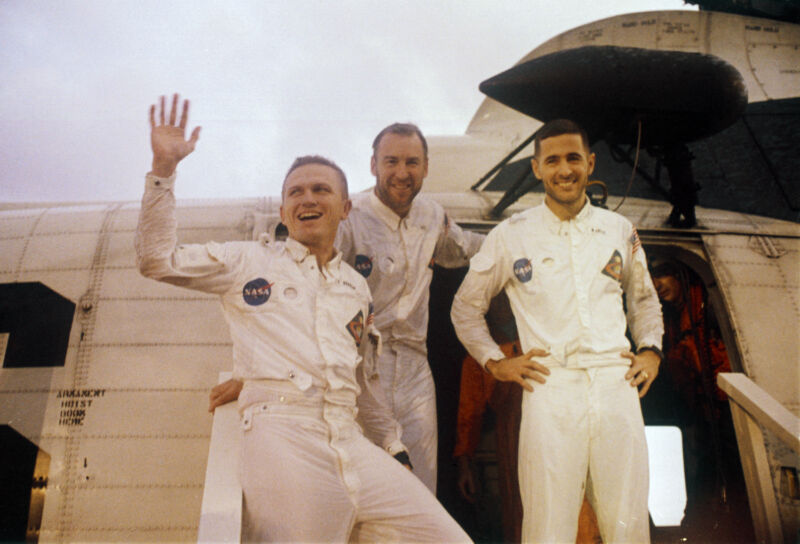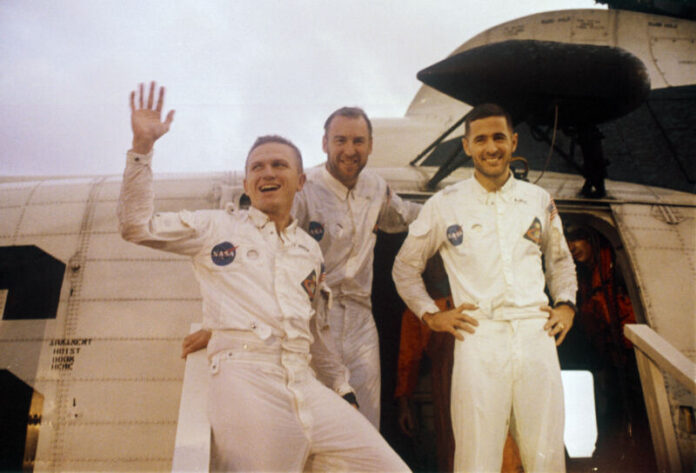
Enlarge / NASA astronauts Frank Borman, Jim Lovell, and Bill Anders wave to onlookers aboard the USS Yorktown after splashdown to end the Apollo 8 mission to the Moon. (credit: NASA/AFP via Getty Images)
Frank Borman, an Air Force test pilot, astronaut, and accomplished businessman who led the first crew to fly to the Moon in 1968, died Tuesday in Montana, NASA said Thursday. He was 95 years old.
“Today we remember one of NASA’s best," NASA Administrator Bill Nelson said in a statement. "Astronaut Frank Borman was a true American hero. Among his many accomplishments, he served as the commander of the Apollo 8 mission, humanity’s first mission around the Moon in 1968."
Borman, joined by crewmates Jim Lovell and Bill Anders, orbited the Moon 10 times over the course of about 20 hours. They were the first people to see the Earth from another world, a memory of "wonderment" Borman recalled decades later. Apollo 8 produced one of the most famous photos ever taken, the iconic "Earthrise" showing a blue orb—the setting for all of human history until then—suspended in the blackness of space over the charcoal gray of the Moon's cratered surface.
Read 25 remaining paragraphs | Comments
Ars Technica - All contentContinue reading/original-link]




